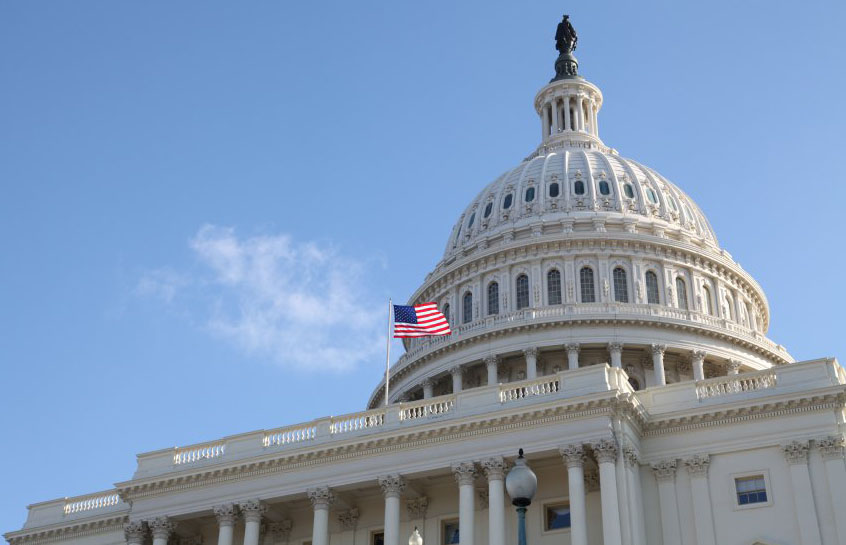MORGANTOWN — On Thursday, President Joe Biden signed a bill to raise the United States’ debt ceiling, narrowly avoiding a default on the country’s debt Oct. 18.
If Congress had failed to pass a resolution, the resulting debt default would have meant serious financial and economic implications for the entire country and possibly the world.
This process is likely to repeat itself in December, so The Dominion Post, with the help of an area expert, breaks down just what the national debt is, how it differs from what you or I may owe, and some issues — past the national limit — that are of concern.
To understand the debt limit, we first must understand the national debt.
The basics
The government’s primary income, or revenue, comes in the form of taxes.
“When government spending is greater than tax revenue, which is almost always the case these days, since the early 70s, then the government has to issue additional treasury bonds and bills — has to issue additional debt to pay the difference between the spending and the tax revenue,” said West Virginia University associate professor of economics Scott Schuh.
Some of those bonds and bills come due in a matter of months, while some can take years or even decades to mature.
“The national debt is typically defined as the total amount of U.S. Treasury bonds and bills that are outstanding in the market at any point in time,” Schuh said.
Therefore, the national debt is not just what we borrowed this year, or even last year, but rather, “the total amount of outstanding borrowings by the U.S. Federal government, accumulated over our history,” according to a recent White House blog post.
Per Article I, Section 8 of the U.S. Constitution, Congress has the express power, “to borrow Money on the credit of the United States.” In order to facilitate the function of the government and avoid having to approve every single issuance of bonds and other debt instruments from the Treasury, Congress has instead for over a century implemented debt limits.
“The debt limit is a ceiling imposed by Congress on the amount of debt that the U.S. Federal government can have outstanding. This limit has been set at $28.4 trillion since August 1st, 2021,” the White House said.
Familiar, but not the same
Although it may be tempting to think of this issue in terms of personal or even business finance, the scope and scale of a nation makes it fundamentally different.
“Individual households, and firms have finite life cycles. So eventually, if you have enough debt, you’re gonna have to pay it back, it’s gonna come out of your estate,” Schuh said. “The federal government seems like it has an even longer horizon. Like it’s not ever gonna die. So it never technically has to pay back the debt, unless it were to come to some end.”
Furthermore, while $28.4 trillion in debt may seem like an astronomical, eye-watering amount of debt, it is commensurate with the nation’s gross domestic product, which was roughly $22 trillion in 2020.
It’s a process
When the debt limit is reached, the government doesn’t immediately run out of funds or resources.
In its blog post, the White House explains that, “the U.S. Treasury can also take certain ‘extraordinary measures’ to extend how long it can continue to pay all the government’s obligations while staying below the limit. These measures include accounting techniques within several government accounts that temporarily reduce the amount of U.S. Treasury securities issued to those accounts. These actions include suspending new investments or redeeming existing investments early.”
The U.S actually hit the debt limit in July, and Secretary of the Treasury Janet L. Yellen has been using these extraordinary measures since then. On Sept. 28, she informed Congress via a letter that those extraordinary measures were quickly running out, and that action needed to be taken to raise the debt ceiling.
The Senate took action in early October, followed by the House of Representatives earlier this week. A debt default was narrowly avoided, kicking the can down the road for another few months. But what would happen if Congress is unable to come together to raise the debt limit, and the U.S. defaults in December?
Worst-case scenario
According to Prof. Schuh, that should not be the focus of the debt ceiling discussion.
“Everyone knows that if we did not raise the national debt, we did not pay off our interest payments, much less our principal payments, our international credit would be so bad, and our ability to proceed with all the government spending that we do, will be so bad that the economy would be crushed worse than the financial crisis. So, no one’s ever gonna do it,” Schuh said.
However, for the morbidly curious among us, the White House echoes those potential ramifications of a U.S. debt default in another blog post. A default would almost certainly kick off a global financial crisis and recession, and require the government to freeze military and pandemic response activity.
The impact would be felt by everyone, everywhere, as in, “families with children, retirees, and veterans would quickly, even overnight in some cases, face the prospect of losing the regular Federal payments that help them to make ends meet,” the White House said.
The White House blog concludes, “The debt ceiling is not and should not be used as a political football. The consequences are too great.”
“That doesn’t mean they’re not gonna play political games of brinkmanship,” Schuh said. “It’s more a question of, ‘What is the next debt limit discussion or debate or negotiation going to do, or produce in terms of political leverage for other types of issues?’ ”
Tweet @SchulzReports




